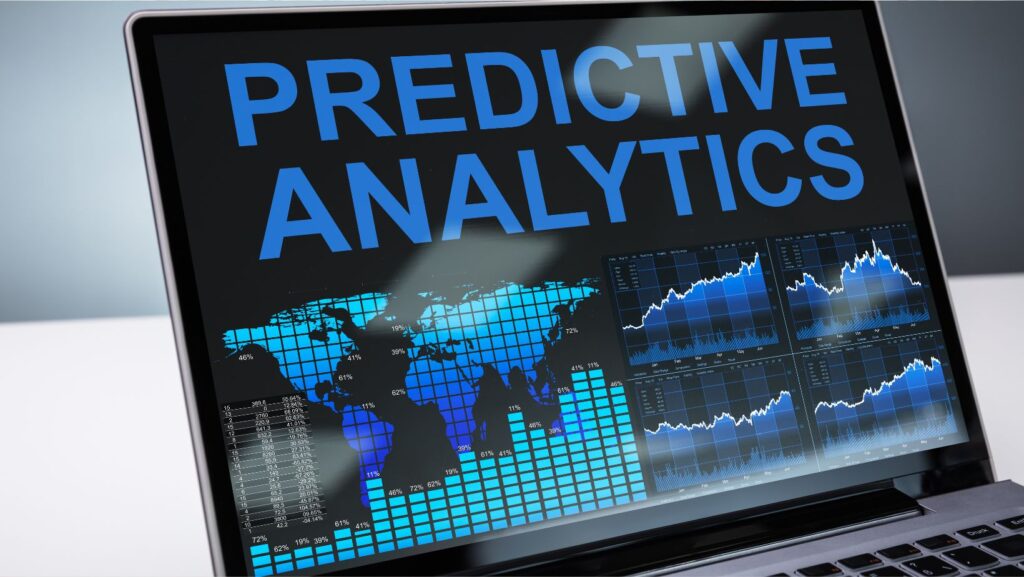How often have you thought about buying something, only for an advertisement for that product to appear in your feed shortly afterward? It’s probably happened to everyone. However, this is not the machinations of huge corporations or the attempts of aliens to capture our consumer consciousness. This is what we’re seeing as the result of hard work in predictive analytics. Naturally, with any cutting-edge tech, predictive analytics finds its place in programmatic advertising. And that’s exactly what we’re diving into next.
First of All, What is Programmatic Advertising?
Programmatic advertising flips the traditional ad-buying script. Instead of committing to specific spaces on platforms, it focuses on reaching a particular audience type through automated systems. Think of it as setting up a digital billboard that comes to life only for the eyes of those who truly appreciate what’s on offer. It’s all about programmatic advertising. You get to specify exactly who your audience is, with all their unique traits and interests, and let the tech do its magic. This way, your ads find their way to the people who are genuinely interested, making every view count.
This approach streamlines the once labor-intensive advertising process. Gone are the days of haggling over prices with multiple ad networks or being constrained by a limited ad spread. Now, automation brings transparency and efficiency, allowing for real-time management and optimization of online ads.

Think back to 2010 when advertisers had to manually navigate the advertising landscape, juggling negotiations and placements. Today, that scenario feels almost archaic. Programmatic advertising has truly transformed digital advertising, making it smarter, quicker, and incredibly precise.
What is Predictive Analytics?
Predictive analytics is the prediction of events and their characteristics. An event can be the purchase or non-purchase of a product, and a characteristic can be its price. Such a prediction is always made on the basis of data and different models of their processing. In marketing, data is usually collected on customers: purchase history, personal data, and interests. Processing models are methods of mathematical statistics, machine learning algorithms, neural networks, and others.
Almost any event in any industry can be predicted. For example, in online sales, you can predict whether a customer will buy a particular product based on their purchase history. The accuracy of such a prediction is far from 100%, but it still helps companies improve metrics.
In the world of AI for programmatic advertising, predictive analytics comes into play by sifting through mountains of data—everything from previous shopping habits and demographic details to the way people interact with content in real-time. This data-crunching magic can anticipate the kinds of content or products someone might be into. This means that advertisers have the opportunity to customize their ads so they’re incredibly relevant and personal. This approach makes the entire experience much more captivating and engaging for the audience.
How AI Enhances Predictive Analytics
AI’s arrival has totally revolutionized the way we forecast trends and understand patterns, particularly when it comes to analyzing and predicting various types of data. At the heart of this seismic shift are machine learning algorithms. These algorithms excel at navigating through mountains of information far beyond what human capability allows. Picture them as detectives of the digital age, tirelessly scouring through data to uncover patterns and clues. They’re constantly learning and getting better at guessing future occurrences, especially in pinpointing what people might take an interest in next.
For instance, consider how AI analyzes an individual’s online footprint, including the sites they visit, their purchases, and their interactions with advertisements. By evaluating this data, AI can form educated predictions about which products or services a person might be curious about in the future. This insight is a goldmine for advertisers, as it enables them to tailor their advertisements to resonate on a personal level, greatly enhancing the chances of engaging the consumer and sparking actions like clicks or purchases.
The Future of Predictive Analytics in Programmatic Advertising
With AI and machine learning getting better, they’re totally changing programmatic advertising by accurately guessing what customers will do. These advanced models are close to adapting to real-time consumer trends, creating ads tailored perfectly to individual desires and needs.
Now, to throw some hard numbers into this mix, the global predictive analytics market was worth a cool $10.2 billion as of 2023. But hold on, it’s about to get way bigger.

Experts are saying we should expect this market to skyrocket to $63.3 billion by 2032, with a compound annual growth rate (CAGR) of 22.4% from 2024 to 2032. It’s clear predictive analytics is not just a fleeting trend—it’s reshaping how we think about reaching out to consumers, making every interaction count more than ever.
Conclusion
If you’re leveraging programmatic advertising to get the word out about your services, chances are you’ve dabbled in predictive analytics, even if only a bit. Getting a firmer grasp on what exactly it is and its importance can do wonders, especially since predictive analytics, when teamed up with artificial intelligence, unlocks some pretty impressive capabilities for advertisers. Imagine being able to pull off stunts like masquerading as extraterrestrials or being the source of the next big conspiracy theory… Ha, just pulling your leg there. But in all seriousness, advertisers can use these technologies to make ads more effective and beneficial, not just for their own pockets but for users, too.



